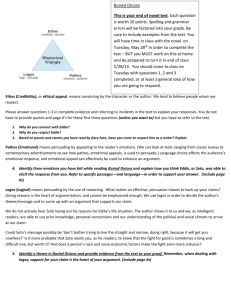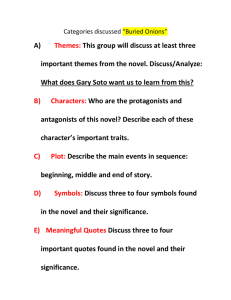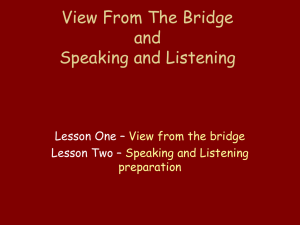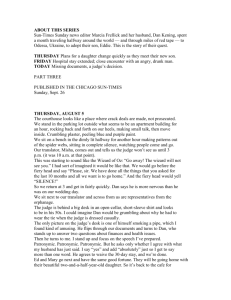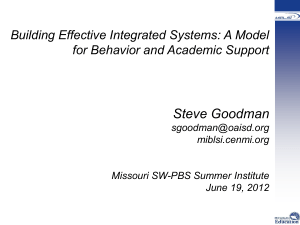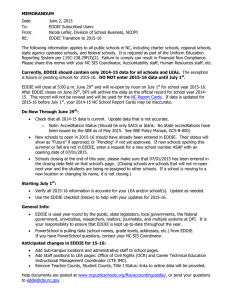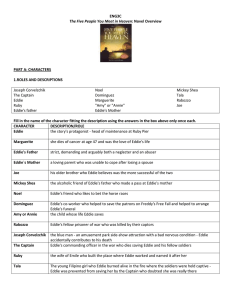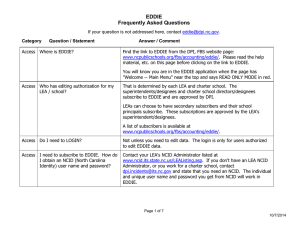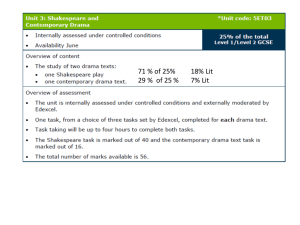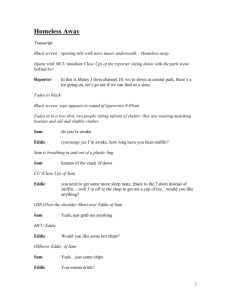Questions and Characterization Level of Proficiency: Intermediate
advertisement
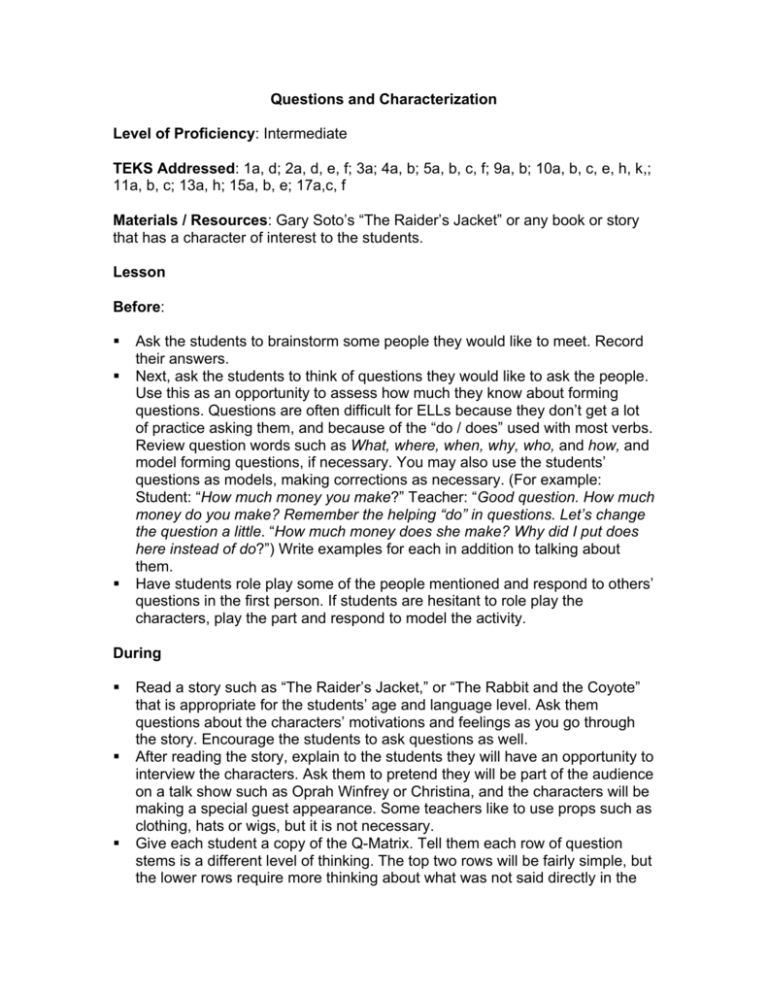
Questions and Characterization Level of Proficiency: Intermediate TEKS Addressed: 1a, d; 2a, d, e, f; 3a; 4a, b; 5a, b, c, f; 9a, b; 10a, b, c, e, h, k,; 11a, b, c; 13a, h; 15a, b, e; 17a,c, f Materials / Resources: Gary Soto’s “The Raider’s Jacket” or any book or story that has a character of interest to the students. Lesson Before: Ask the students to brainstorm some people they would like to meet. Record their answers. Next, ask the students to think of questions they would like to ask the people. Use this as an opportunity to assess how much they know about forming questions. Questions are often difficult for ELLs because they don’t get a lot of practice asking them, and because of the “do / does” used with most verbs. Review question words such as What, where, when, why, who, and how, and model forming questions, if necessary. You may also use the students’ questions as models, making corrections as necessary. (For example: Student: “How much money you make?” Teacher: “Good question. How much money do you make? Remember the helping “do” in questions. Let’s change the question a little. “How much money does she make? Why did I put does here instead of do?”) Write examples for each in addition to talking about them. Have students role play some of the people mentioned and respond to others’ questions in the first person. If students are hesitant to role play the characters, play the part and respond to model the activity. During Read a story such as “The Raider’s Jacket,” or “The Rabbit and the Coyote” that is appropriate for the students’ age and language level. Ask them questions about the characters’ motivations and feelings as you go through the story. Encourage the students to ask questions as well. After reading the story, explain to the students they will have an opportunity to interview the characters. Ask them to pretend they will be part of the audience on a talk show such as Oprah Winfrey or Christina, and the characters will be making a special guest appearance. Some teachers like to use props such as clothing, hats or wigs, but it is not necessary. Give each student a copy of the Q-Matrix. Tell them each row of question stems is a different level of thinking. The top two rows will be fairly simple, but the lower rows require more thinking about what was not said directly in the store. Talk about making inferences and drawing conclusions, and how because of our own experiences, we can often relate to how the character feels, even though the author doesn’t tell us. For example, in the Soto story, Lorena is daydreaming about Eddie in French class when the teacher asks her to conjugate a verb. Instead of conjugating it in French, she responds in Spanish. Gary Soto doesn’t tell us Lorena was embarrassed and the others laughed, but because of our past experiences, we can conclude those things happened. Drawing conclusions and making inferences are very difficult for ELLs, who often struggle to understand what is explicit in a text. Teaching them to draw on their own experiences, and trust their own judgment can be helpful in developing skills to understand what is implicit in a story, and to relate in a more meaningful way to characters. Model forming a question from each of the rows. Questions for Lorena might include: Who is your best friend? Why did Eddie give you his jacket? What can you do to make Eddie forgive you? Why would Eddie be so mean to you at the mall? What will you say if someone asks you why Eddie took back his jacket? Who might help you get Eddie back? Give the students sufficient time to write six questions for one or more characters. They should use a question stem from each row. Decide beforehand if you will have them interview only one character, or have a panel of characters to interview. (For example, you could have only Lorena, or also include Guadalupe, Eddie and Frankie, other characters in the story.) As students are writing, circulate around the room to correct errors, and praise students, especially those who are hesitant to participate in class discussions. (“What a great question! I hadn’t thought of that. Be sure you ask that one.”) When all students have questions written, explain that students will receive a grade for participation, either as an audience member or by role playing. Model answering the questions written earlier, explaining that although the information may be not stated in the story, we can infer what the character was thinking or feeling, and respond. For example, a student asks: “Why did Eddie give you his jacket? “ A response might be: “ Well, I thought Eddie had liked me since school started because he used to tease me in the hall and say “ Hey Lorena loca!” Frankie told Guadalupe that Eddie thought I was cool, and she told Frankie that I liked Eddie, so he knew.” If students are willing, allow them to come to the front of the class and sit to respond to the “audience.” Play the role of facilitator, or host, calling on audience members. If students are not willing to come forward at that point, play the part of character until they feel more comfortable. After Collect the questions to use to review the story. Ask students to use the questions and responses to write a short essay about the character. Provide a graphic organizer that is divided into thoughts, actions, hopes and feelings, or one that is divided by how the character felt at different points in the story. After students complete the first draft of their essays, they should be peer edited and revised.


